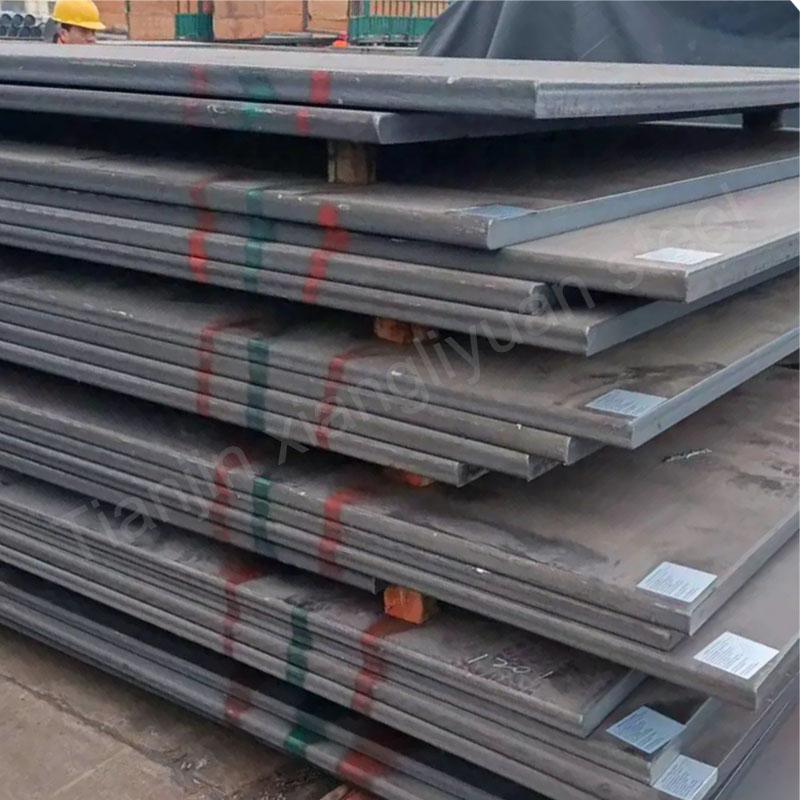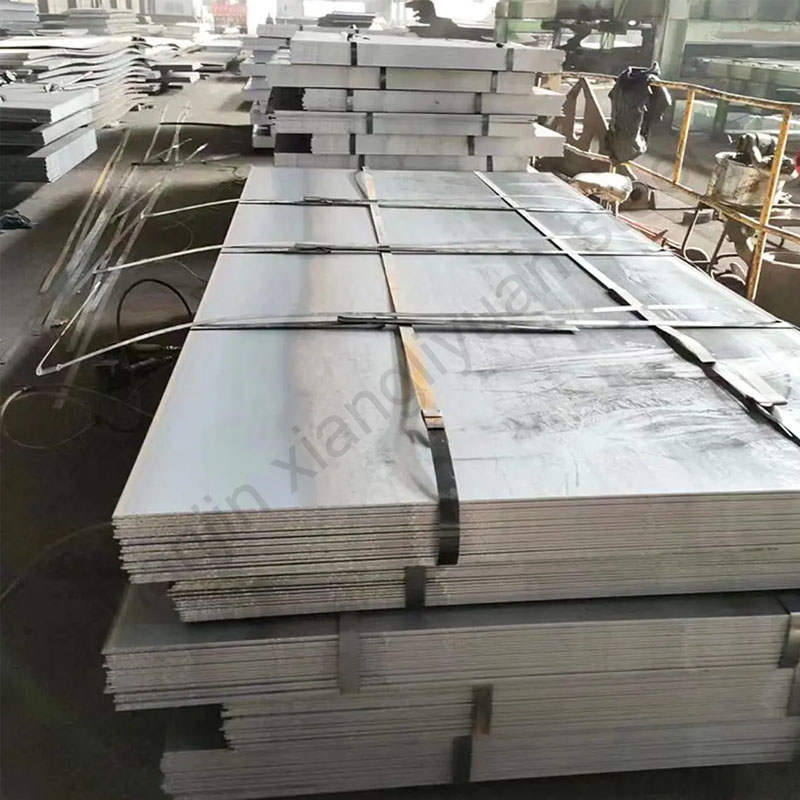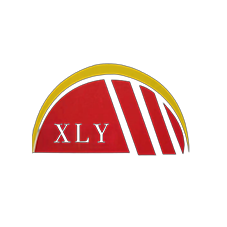Carbon steel patterned plate/roll is a carbon steel plate with regular patterns on the surface, which is widely used in construction, machinery, transportation and other fields.
1. Material classification
The material of carbon steel patterned plate/roll varies according to different application occasions and performance requirements. The following are common carbon steel patterned plate steel grades:
Q235 series:
Q235A/B/C/D: Q235 is a common low-carbon steel series in China with good plasticity, toughness and weldability. Commonly used in building structures, bridges and ordinary mechanical parts.
Q235B is the most common steel grade, widely used in patterned plate manufacturing, suitable for general non-slip floors, pedals, etc.
Q345 series:
Q345A/B/C/D/E: Q345 is a low-alloy high-strength steel with high strength and good toughness. It is suitable for occasions with high strength requirements, such as engineering machinery, bridges, vehicles and other structural parts. Q345B is a more commonly used grade in this series.
SS400: Ordinary carbon structural steel in the Japanese JIS standard, with performance similar to Q235. SS400 steel plates are often used to manufacture general construction and mechanical structural parts, as well as patterned plates with low anti-slip performance requirements.
A36: Ordinary carbon structural steel in the American ASTM standard, commonly used in construction and bridge structural parts. A36 steel has performance comparable to Q235, has good weldability and mechanical properties, and is suitable for manufacturing patterned steel plates.
S235JR: Low carbon steel in the European EN standard, similar to China’s Q235. S235JR steel has good toughness and strength, and is often used to manufacture patterned steel plates, suitable for general construction and industrial use.
Hot-dip galvanized carbon steel: In order to enhance corrosion resistance, some carbon steel patterned plates are hot-dip galvanized after production, and common substrates are Q235 or Q345, etc. Hot-dip galvanized carbon steel patterned plates are suitable for outdoor and humid environments, such as building scaffolding, ship decks, etc.
These carbon steel patterned plates of different steel grades can meet the needs of different uses, from general building structures to anti-slip floors for industrial equipment, through different processing processes. When choosing steel grades, factors such as tensile strength, toughness, weldability and corrosion resistance are usually considered.
2. Pattern type
The pattern types of carbon steel patterned plates/rolls are mainly the following. The common pattern structures are different, with different anti-slip properties and aesthetic effects:
Single rib pattern: also known as single-strip patterned plate, with only one raised pattern on the surface. Due to the single pattern, the anti-slip effect is general, suitable for occasions with mild anti-slip requirements.
Double rib pattern: There are two parallel or staggered raised stripes on the surface, and the anti-slip effect is better than the single rib pattern. It is suitable for places that require medium anti-slip performance, such as general factory passages or trails.
Triple rib pattern: There are three raised rib-like patterns on the surface. The three-rib pattern has a strong anti-slip effect and is suitable for wet or frequently walking environments, such as outdoor stairs and car floors.
Five-rib pattern (herringbone): The most common pattern type, with five evenly distributed raised stripes on the surface, arranged in a “herringbone” shape, so it is called “herringbone pattern”. Five-rib pattern plate has the best anti-slip performance and is often used in places with high anti-slip performance requirements such as stair treads and public transportation vehicle floors.
Diamond pattern: The surface is a regular diamond-shaped protrusion, with strong friction and decorative effect, suitable for architectural decoration and workshop floors.
Lentil pattern: The surface is a lentil-shaped raised pattern, with strong friction and a unique appearance. It is suitable for specific industrial uses, such as anti-slip floors for mechanical equipment.
Different pattern types can not only play a beautiful role, but also meet different anti-slip and wear-resistant requirements. These pattern structures are usually formed by die pressing or hot rolling during the rolling process to ensure that the surface pattern is uniform and has good adhesion.
III. Implementation standards
The production and quality control of carbon steel pattern plates/rolls are usually in accordance with the corresponding national or industry standards. The following are commonly used patterned carbon steel plate standards:
GB/T 3277-1991: This is China’s patterned steel plate standard, which specifies the technical conditions, size, shape, weight and inspection methods of patterned steel plates, and is applicable to patterned carbon steel plates for general purposes.
JIS G3101: This is Japan’s patterned steel plate standard, which is applicable to low-carbon steel and low-alloy steel plates for general structures, mainly covering material requirements and inspection methods.
ASTM A786: This is the American patterned steel plate standard, which is applicable to structures with high anti-slip requirements such as floors and stair treads.
EN 10025: This is the European patterned steel plate standard, which covers carbon steel and low-alloy steel materials used for structures, and specifies chemical composition and mechanical properties.
Different standards have specific provisions on the dimensional tolerance, chemical composition, mechanical properties, etc. of patterned steel plates to ensure that the products meet the use requirements of various industries.
IV. Main uses
The main uses of carbon steel patterned plates/rolls are extensive, covering multiple fields such as construction, machinery, and transportation:
Construction field: Patterned carbon steel plates are often used in floors, pedals, stairs, corridors and other parts, providing good anti-slip performance, especially suitable for crowded or humid environments, such as subway stations, airports, factory workshops, etc.
Mechanical equipment: Patterned carbon steel plates are also widely used in protective covers, pedals and other parts of mechanical equipment, providing anti-slip and wear resistance through surface patterns to protect the safety of operators.
Transportation field: In the transportation field, patterned carbon steel plates are used in vehicle floors, truck compartment floors and pedals to improve the durability and safety of vehicles and equipment.
Decorative use: Patterned steel plates are also used for interior decoration to increase beauty and layering, such as floor or wall decoration in shopping malls, exhibition halls and other places.
Industrial use: In industrial environments such as factories, mines, and oil fields, patterned steel plates are used for floors, workbenches and other parts, which are effective in anti-slipping, ensuring safe operation of workers and reducing the risk of slips and falls.
In summary, carbon steel patterned plates/rolls play an important role in modern industry and construction, and their materials and pattern types are selected according to different application requirements. Through a production process that meets industry standards, this type of steel plate not only has high strength and durability, but also takes into account safety and aesthetics, providing a reliable solution for different projects and facilities.





